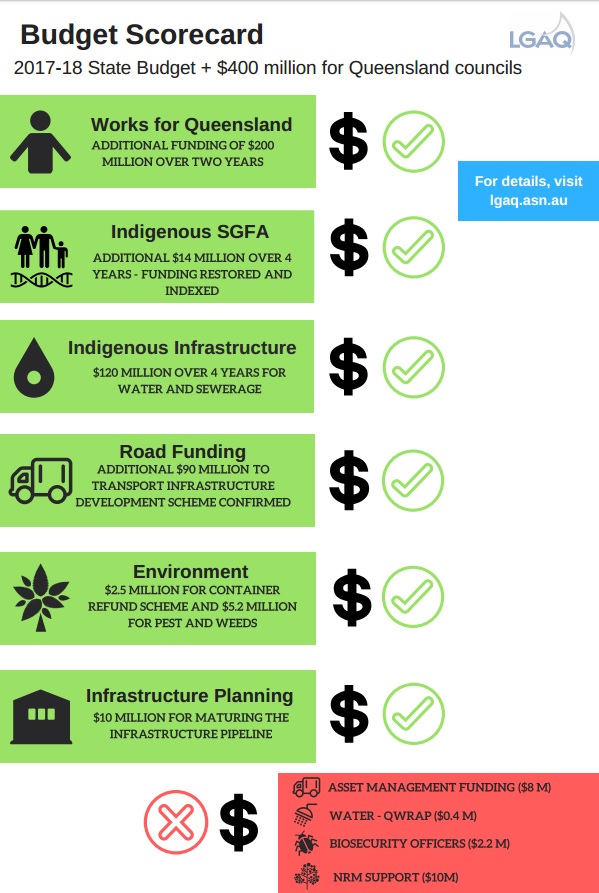
Councils approve! Image: Lucasfilm/Disney.
The Queensland government has allocated $400 million to the state’s local government sector in its annual Budget, which has been warmly welcomed by the council peak body.
According to the state Local Government Minister, Mark Furner, the state Parliament was informed that the Budget had score ‘six green ticks’ from the Local Government Association of Queensland (LGAQ).
Those ticks were illustrated in the LGAQ’s infographic, as seen below:
 Councils in Queensland have noted that they are pleased to see additional funding of $200 million over two years for public works, as well as $120 million for Indigenous infrastructure, $90 million for road funding and $10 million for infrastructure planning.
Councils in Queensland have noted that they are pleased to see additional funding of $200 million over two years for public works, as well as $120 million for Indigenous infrastructure, $90 million for road funding and $10 million for infrastructure planning.
“Happy campers, thrilled – that’s been the reaction from the LGAQ’s Greg Hallam after this week’s delivery of the Palaszczuk Government’s 2017-18 Budget with an extra $400 million for local Councils,” Mr Furner said.
“The LGAQ’s Budget Scorecard speaks for itself with six big green ticks for direct funding to Councils to support thousands of local jobs and kick-start hundreds of infrastructure projects in regional Queensland,” Mr Furner said.
“In every regional community I visit, local Mayors tell me they love the Palaszczuk Government’s Works for Queensland program because it means more jobs in local communities.”
According to Mr Furner, the Budget gives mayors the flexibility to direct infrastructure funding to where they “know it’s needed most”.
“The LGAQ’s glowing Budget Scorecard demonstrates the Palaszczuk Government has listened to Councils about helping them to support thousands of jobs and deliver infrastructure for liveable communities in regional Queensland,” Mr Furner said.
“By contrast, state funding for local government under the previous Newman-Nicholls LNP Government plummeted like a lead balloon with cuts inflicting substantial pain on Queensland Councils.”
The LGAQ said the continuation of the Works for Queensland program would create thousands of jobs across local communities and kick-start hundreds of infrastructure projects.
LGAQ chief executive Greg Hallam said the move was especially pleasing because it topped the list of Budget proposals the LGAQ submitted to Treasurer Curtis Pitt several weeks ago.
Other successful funding bids for the LGAQ include: more funding to strengthen community infrastructure against natural disasters, the expansion of a program to help ensure local communities are resilient to climate change and a major boost to funding for infrastructure and economic development programs in indigenous communities.
Mr Hallam said another big win for indigenous local governments was the restoration of funding for the State Government Financial Aid program which had been cut under the previous Newman government.
“That rights an historical wrong,” he said.
“All up, this is a Budget that is well-considered and well-targeted to helping those regional communities that need it most.”
He said extending the Works for Queensland program – by $200 million over the next two years – would ensure local councils were able to continue being a key driver of job creation in Queensland.
The Works for Queensland program has already allowed councils to embark on more than 720 infrastructure projects, supporting nearly 6,000 jobs.
“Our Budget submission was targeted at building on the success stories that Works for Queensland has produced and supporting local governments as ideal partners with the State Government in the challenging task of job creation,” he said.
“As the level of government closest to the community, strong local employers and reliable drivers of regional economies, councils are best placed to deliver initiatives aimed at bolstering local jobs growth, designing smart cities, improving water and wastewater services and pursuing economic development opportunities.”





